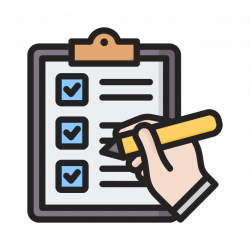Custom Software
Accessibility
Digital Accessibility isn’t just about making websites and apps available to people with disabilities; it’s about ensuring users can interact with your software in the way that suits them best—whether through larger fonts, higher contrast, or alternative input devices. It involves designing, developing, and testing your software to be compatible with any assistive technology.
Compliance with accessibility requirements is dictated by federal and local regulations, which vary depending on your user base and location.
OpenArc’s expertise can help you navigate accessibility challenges. We offer education, auditing, and support in designing, developing, and testing your software to ensure full compliance.

HoW TO MAKE YOUR SOFTWARE COMPLIANT

Assess if you need to be compliant
Finding out if you need to be compliant should be the first step you have to take. Depending on the type of business or government you are, different rules and regulations will apply to your business Once you have discovered that you need to be compliant or simply want your business to become compliant, you will have to find out what type of compliance you will have to achieve.

Audit your existing software
To update your existing software and become compliant, you must perform an accessibility audit. You must test all your code against compliancy rules, but it continues beyond there. A bad user experience can also influence your accessibility compliance, even when your software passes WCAG (Web Content Accessibility Guidelines) compliance checks, and therefore, a manual usability audit has to take place as well.

Design, Develop and Test
If your audit showed that making your existing software compliant will be too time-consuming or expensive, or if you were already planning a new version, you will start all over. To design, develop, and test your new version of the software, make sure you keep accessibility in mind from the start. Let it influence each step of the development cycle. If you wait until a later stage, you might increase the cost and time it will take to release your software.
What kind of compliance applies to me?
You might have heard about ADA Title II and Title III, Section 508, and WCAG, but do they apply to your company’s products? And if they do, what kind of compliance applies to my websites or applications?
When you are a private company in the US, the Americans with Disabilities Act (ADA) Title III explains whether you need to be compliant. If you are a state or local government, ADA Title II and Section 508 dictate the compliance requirement and the deadline.
The Web Content Accessibility Guidelines (WCAG) are the set of guidelines against which your website and applications can be tested. There are different versions of WCAG (the most recent version is 2.2) and different levels of compliance with it. When it is mentioned to be compliant in the United States, it refers to compliance with WCAG 2.1, level AA. Remember that making your software WCAG Compliant is not the only requirement to make your software compliant. Making your software user-friendly and providing the correct layouts and descriptions of content are all part of the process as well (and are often overlooked.)
If your company offers services to citizens of other countries, other local rules and regulations may apply to your specific business. We can help you determine what rules and regulations apply to you.
Feeling lost? Let’s talk accessibility.
If you have any questions or feel overwhelmed by the amount of information, contact us to schedule a call for an informative conversation about accessibility (without a sales pitch).